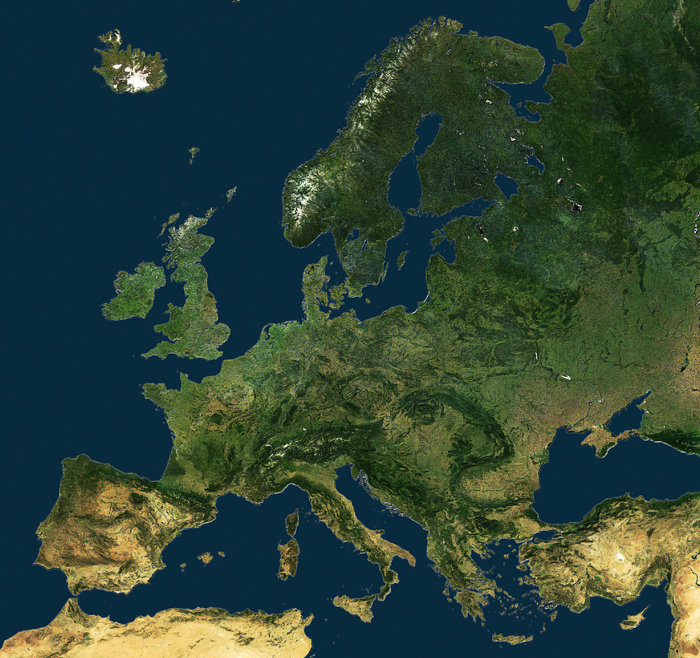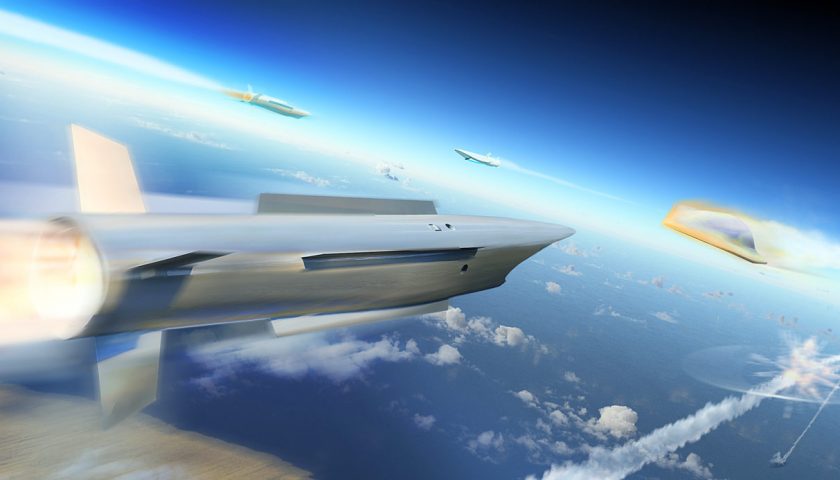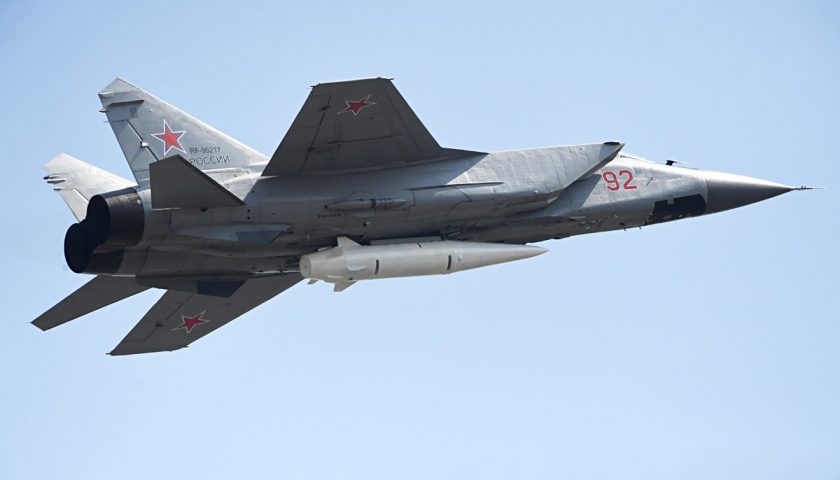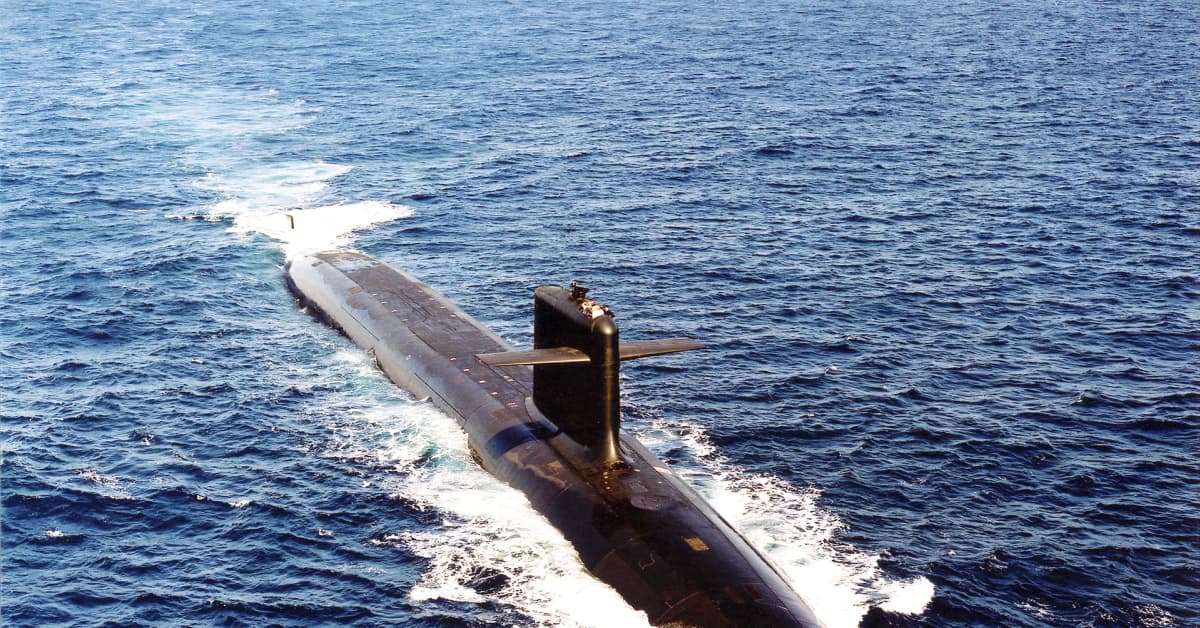Vaikka ollaankin demokratia, niin aika monessa asiassa joutuvat kansalaiset luottamaan päättäjien arvostelukykyyn. Ei ole aikaa eikä koulutusta ottaa kantaa monimutkaiseen tekniseen kysymykseen, kuten ydinvoiman turvallisuuteen. Tai käytössä ei ole kaikkia asiaan vaikuttavia tietoja, kuten turvallisuuspoliittisissa kysymyksissä. Mitä NATO-kannatukseen tulee, niin suurinta tämä kannatuss on ryhmässä, jolla on sota-asioista sanomalehden lukijaa enemmän tietoa eli aktiivi ja evp-upseereilla.Tätä jossittelua joskus tuodaan esiin.
Näköjään pieni osa suomalaisista ulkoistaa ajattelun päättäjille.
Install the app
How to install the app on iOS
Follow along with the video below to see how to install our site as a web app on your home screen.
Note: This feature may not be available in some browsers.
You are using an out of date browser. It may not display this or other websites correctly.
You should upgrade or use an alternative browser.
You should upgrade or use an alternative browser.
Euroopan unionin yhteisen puolustuksen rakentaminen
- Viestiketjun aloittaja Huhta
- Aloitus PVM
Tämäntyylistä se pakkaa olla alalla kuin alalla. Esim kulttuuriväki kannattaa Guggenheimia ja "kansa" ei.Vaikka ollaankin demokratia, niin aika monessa asiassa joutuvat kansalaiset luottamaan päättäjien arvostelukykyyn. Ei ole aikaa eikä koulutusta ottaa kantaa monimutkaiseen tekniseen kysymykseen, kuten ydinvoiman turvallisuuteen. Tai käytössä ei ole kaikkia asiaan vaikuttavia tietoja, kuten turvallisuuspoliittisissa kysymyksissä. Mitä NATO-kannatukseen tulee, niin suurinta tämä kannatuss on ryhmässä, jolla on sota-asioista sanomalehden lukijaa enemmän tietoa eli aktiivi ja evp-upseereilla.
Tuohan on aivan selvää että sotaväki kannattaa Natoa. Ytimiin pitää päästä hinnalla millä hyvällä.
Tämän takia demokratia on äärettömän hieno juttu,kun yksi "ryhmä" ei pääse päättämään "omia" asioitaan. Varsinkin kun kyse on näinkin suuresta asiasta kuin NATO, jossa väistämättä tulee myöskin velvollisuuksia.
Nojatuolistrategi
Ylipäällikkö
Suomen agendaa.
Euroopan unioni on tiivistänyt turvallisuus- ja puolustusyhteistyötään viime vuosina. EU:n puolustusyhteistyössä keskeisessä roolissa ovat niin sanotut uudet puolustusaloitteet, joihin voidaan lukea
Suomi haluaa varmistaa puheenjohtajakaudellaan, että jo asetetut tavoitteet toimeenpannaan tehokkaasti. Suomi myös jatkaa kaudellaan EU:ssa käytävää strategista keskustelua turvallisuudesta ja puolustuksesta. https://eu2019.fi/taustoitukset/uudet-aloitteet
- pysyvä rakenteellinen yhteistyö (PRY tai englanniksi PESCO),
- puolustuksen vuosittainen arviointi (Coordinated Annual Review on Defence, CARD),
- Euroopan puolustusrahasto (European Defence Fund, EDF) ja
- EU:n kriisinhallintaoperaatioiden suunnittelu- ja johtamiskyvyn vahvistaminen.
EU:n ulkoasioiden ja turvallisuuspolitiikan korkea edustaja Federica Mogherini on kutsunut Global Tech Panel -asiantuntijaryhmän pohtimaan innovatiivisia ratkaisuja ja tekoälyn haasteita myös puolustuksen alalla. Euroopan puolustusvirasto EDA:n teknologian ennakointi- ja analyysityössä tekoäly on jo vahvasti esillä. Tutkimus- ja kehitystyötä voidaan puolestaan rahoittaa muun muassa Euroopan puolustusrahaston tuella. Keskeisiä tahoja ovat myös EU:n sotilaskomitea ja EU:n sotilasesikunta. Digitalisaatio ja tekoäly Suomen puheenjohtajakaudella järjestettävissä kokouksissa:
https://eu2019.fi/taustoitukset-digitalisaatio-ja-tekoaly-puolustuksessa
- Epävirallinen puolustusministerikokous 28.–29.8.
- EU:n sotilaskomitean (EUMC) epävirallinen kokous 9.9.
- Digitalization and Artificial Intelligence in Defence -seminaari 9.9. EUMC-kokouksen yhteydessä
Tietenkin, sehän kuuluu demokratian luonteeseen. Mutta jos ei ole tietoa, niin voi syntyä huonoja päätöksiä. Kansanäänestys ei olisi vahvistanut sen paremmin talvisodan rauhaa kun YYA-sopimustakaan. Ja kun ei tietoa ole niin todellisuudessa saatetaan äänestää jostain muusta, kuten vaikka hallituksen suosiosta. Jos epäsuosittu PM juha Sipilä olisi järkännyt kansaäänestyksen EU:sta niin mekin olisimme ehkä matkalla sieltä ulos.Tämän takia demokratia on äärettömän hieno juttu,kun yksi "ryhmä" ei pääse päättämään "omia" asioitaan.
Viimeksi muokattu:
Tietenkin, sehän kuuluu demokratian luonteeseen. Mutta jos ei ole tietoa, niin voi syntyä huonoja päätöksiä. Kansanäänestys ei olisi vahvistanut sen paremmin talvisodan rauhaa kun YYA-sopimustakaan. Ja kun ei tietoa ole niin todellisuudessa saatetaan äänestää jostain muusta, kuten vaikka hallituksen suosiosta. Jos epäsuosittu PM juha Sipilä olisi järkännyt kansaäänestyksen EU:sta niin mekin olisimme ehkä matkalla sieltä ulos.
Mikään hallitusmuoto ei suojaa huonoilta päätöksiltä. Eikä tieto takaa oikeaa päätöstä varsinkaan yhteiskunnallisissa kysymyksissä jossa monesti on vaikea sanoa mikä edes on oikein tai väärin.
Sori, mutta oli pakko hieman puolustaa suoraa demokratiaa
 .
.Nojatuolistrategi
Ylipäällikkö
Digikartat ja sekoäly.
HALin paluu.
Suomi haluaa EU:n kartoittavan digitalisaation ja tekoälyn merkitystä puolustukselle. Puolustusvoimat isännöi tänään aiheesta Helsingissä seminaarin, johon muun muassa osallistuu EU:n sotilaskomitea. Komitea pitää Suomessa myös oman kokouksensa.
Suomen EU-puheenjohtajuuskauden ohjelmaan kuuluvaan seminaariin on kutsuttu noin 200 osallistujaa yrityksistä, tutkimusmaailmasta sekä EU-maiden puolustushallinnoista. Julkisuudelta suljetussa seminaarissa puhuvat muun muassa Nokian hallituksen puheenjohtaja Risto Siilasmaa sekä EU:n sotilasesikunnan päällikkö, kenraaliluutnantti Esa Pulkkinen.
STT:n ennen seminaaria haastatteleman Siilasmaan mukaan maailmalla on aika laaja yksimielisyys siitä, ettei koneoppivien järjestelmien pidä sallia käynnistää itsenäisesti tappavaa iskua vaan ihmisen pitää olla aina mukaan päätöksentekoketjussa.
Puolustusvoimien tutkimuspäällikön, insinöörieversti Jyri Kosolan mukaan tekoälystä voi olla puolustukselle eniten hyötyä suurten tietomäärien käsittelyssä ja suodattamisessa, mikä nopeuttaa tilannekuvan muodostamista, päätöksentekoa ja kulloinkin parhaaksi katsotun sotilaallisen toiminnan aloittamista.
https://www.mtvuutiset.fi/artikkeli/suomi-haluaa-heratella-eu-ssa-keskustelua-digitalisaation-ja-tekoalyn-merkityksesta-maanpuolustuksessa/7542044#gs.2k73h2
HALin paluu.
Rauhantekijä
Greatest Leader
Jollain tavalla muutosta pitää tapahtua. Esimerkki vaikka Iranin ja Saudin suunnalta osoittaa jonkinlaista vaikeutta liittolaisten puolustamisessa, eli yksinomaan USA/NATO linjalta ei ehkä tule takeita joka paikkaan. Jos on lännellä vaikeeta suojata liittolaisia niin hyvä kun saisi suojattua edes itsensä.
Tässä toisaalta lainattu kommentti.
Tässä toisaalta lainattu kommentti.
.Saudit on hätää kärsimässä ja heistä ei ole Iranille vastusta ilman Usaa. Joten aikamoista arvovallan rapauttamista tässä on meneillään. Länsi ei pysty suojelemaan liittolaisiaan.
Nojatuolistrategi
Ylipäällikkö
Jollain tavalla muutosta pitää tapahtua. Esimerkki vaikka Iranin ja Saudin suunnalta osoittaa jonkinlaista vaikeutta liittolaisten puolustamisessa, eli yksinomaan USA/NATO linjalta ei ehkä tule takeita joka paikkaan. Jos on lännellä vaikeeta suojata liittolaisia niin hyvä kun saisi suojattua edes itsensä.
Tässä toisaalta lainattu kommentti.
.
Piiputtavat aseet.
Kommentti: Saudien savuava ase ei vakuuta
Saudi-Arabian puolustusministeriön tiedottaja Turki al-Malikihttps://www.hs.fi/haku/?query=turki+al-maliki esitteli keskiviikkonahttps://www.hs.fi/ulkomaat/art-2000006243333.html metallimöykkyjä, jotka hänen mukaansa olivat peräisin iranilaisista Ya Ali -risteilyohjuksista. Palaset oli al-Malikin mukaan löydetty lauantain öljyjalostamoiskun jäljiltä.
Yhdysvaltain ulkoministeri Mike Pompeohttps://www.hs.fi/haku/?query=mike+pompeo kuvasi iskua ”sotatoimeksi” ja sanoi alkavansa etsiä eurooppalaisten ja arabien koalitiota rajoittamaan Iranin toimia. Yhdysvalloilla ja Saudi-Arabialla on melkoinen työ houkutella eurooppalaisia yhteisrintamaan, ainakin jos ”koalitiolla” ja ”rajoittamisella” tarkoitetaan sotatoimia. Yhdysvallathan itse sanoi irti Iranin ydinsopimuksen vastoin eurooppalaisten halua, minkä jälkeen suhteet syöksyivät nykyiselle vaarallisesti kiihtyvälle uralle.
Työtä ei helpota, että presidentti Donald Trumphttps://www.hs.fi/haku/?query=donald+trump ja kruununprinssi Mohammed bin Salmanhttps://www.hs.fi/haku/?query=mohammed+bin+salman ovat osoittautuneet äärimmäisen epäluotettaviksi johtajiksi.
Mutta entä isku? Aukottomia todisteita syyllisestä ei ehkä olekaan, minkä myös Saudi-Arabia myönsi keskiviikkona.
Kaikki tosiaan viittaa Iranin jonkinasteiseen osallisuuteen. Tai kääntäen: tarvittaisiin hyvin vakuuttavia todisteita selittämään, miten huthit olisivat yksin kyenneet näin täydellisesti onnistuneeseen iskuun satojen kilometrien päässä Jemenistä.
Vielä emme kuitenkaan tiedä. Maailmassa on vielä riippumattomiakin tahoja, ja YK ilmoitti keskiviikkona lähettävänsä tutkijoita Saudi-Arabiaan. Eri asia on, jäävätkö saudit ja Yhdysvallat odottelemaan tutkinnan tulosta. https://www.hs.fi/ulkomaat/art-2000006243435.html
Globaalissa ja blokkiutuvassa maailmassa Euroopan täytyy nostaa tietyt hallinnonalat unionitasolle, jotta sana painaa ja kuuluu – sisämarkkinat, ulkopolitiikka ja yhteinen (ydin)pelote.
Nojatuolistrategi
Ylipäällikkö
Työnjaon hahmottelua.
Natolle kollektiivinen sotilaallinen puolustus, EU:lle poliisin ja rajaviranomaisten yhteistyö.
EU:n varusteluyhteistyö: kansallisten suorituskykyjen kehittäminen ja teknologinen kilpailu.
Puolustusvoimain komentaja pohti EU-puolustusta maanpuolustuskurssin avajaispuheessaan.
Puolustusvoimain uuden komentajan, kenraali Timo Kivisen mukaan Suomi tukee EU-puheenjohtajamaana unionin puolustusyhteistyön etenemistä. Kivinen korosti valtakunnallisen maanpuolustuskurssin avajaispuheessaan, että Euroopassa Nato keskittyy kollektiiviseen sotilaalliseen puolustukseen ja EU jäsenmaidensa kokonaisturvallisuuteen. Konkreettisia esimerkkejä EU:n kasvavasta roolista ovat muun muassa rajaviranomaisten ja poliisin yhteistyön tehostuminen.
– Sotilaallisesta näkökulmasta EU:n puolustusyhteistyössä on ensisijaisesti kyse kansallisten suorituskykyjen kehittämisestä yhdessä muiden EU-maiden kanssa. Yksittäisiin yhteisiin hankkeisiin osallistuvat ne maat, joita kyseinen hanke palvelee. Tavoitteena on parhaan saatavissa olevan ratkaisun hankkiminen mahdollisimman kustannustehokkaasti, Kivinen sanoi.
Kivisen mukaan Euroopan on pysyttävä mukana teknologian kehityksessä ja hyödynnettävä sen tuomat mahdollisuudet sotilaallisten suorituskykyjen kehittämisessä.
https://www.verkkouutiset.fi/vahva-eurooppa-vahvistaa-suomen-turvallisuutta/
Natolle kollektiivinen sotilaallinen puolustus, EU:lle poliisin ja rajaviranomaisten yhteistyö.
EU:n varusteluyhteistyö: kansallisten suorituskykyjen kehittäminen ja teknologinen kilpailu.
Nojatuolistrategi
Ylipäällikkö
Erään hämärän saitin mukaan, jossa kerrottiin että ne siirretään Romaniaan. Kremlin disinfoa. Turkissa ovat.
Turkin hihassa toistaiseksi - mutta kuinka kauan?
Yhdysvaltain puolustushallinnon kerrotaan valmistelevan noin 50 B61-ydinaseen siirtämistä pois Incirlikin lentotukikohdasta Turkista
Asiaa on selvitetty Pohjois-Syyriassa aloitetun Turkin asevoimien operaation jälkeen. The New York Times -lehden haastattelemien lähteiden mukaan huolena on, että presidentti Recep Tayyip Erdogan voisi käyttää tukikohtaa poliittisen painostuksen välineenä.
Noin 320 kilogrammaa painavat aseet on varastoitu lentotukikohdan maanalaisiin bunkkereihin. The Drive -sivuston mukaan tarkasti vartioitu laitos on eristetty useilla turva-aidoilla ja suojajärjestelmillä. Ydinaseiden aktivointi edellyttää puolustusministeriö Pentagonin valtuutusta ja 12-numeroisen koodin käyttöä. Hätätilanteessa B61-pommit voi muuntaa käyttökelvottomiksi toisella koodilla.
Incirlikin tukikohta joutui intensiivisen huhumyllyn kohteeksi jo kesän 2016 vallankaappausyrityksen jälkeen. Turkissa liikkuneiden perättömien salaliittoteorioiden mukaan myös Yhdysvaltain asevoimat olisi ollut mukana epäonnistuneessa hankkeessa. Osa vallankaappaukseen osallistuneista Turkin ilmavoimien lentokoneista nousi Incirlikin lentokentältä.
The Guardian -lehden mukaan Turkki on uhannut kehittää oman ydinpelotteensa, jos kylmän sodan aikaiset B61-ydinpommit vedetään takaisin Yhdysvaltoihin.
https://www.verkkouutiset.fi/turkkiin-sijoitetut-50-ydinpommia-hermostuttavat-usassa/
Nojatuolistrategi
Ylipäällikkö
Tähtien sota 2.0
https://www.hs.fi/politiikka/art-2000006305593.html
Suomi valmistautuu puolustautumaan avaruudessa – EU:n uudessa puolustusprojektissa varoitetaan hypersoonisista ohjuksista
Euroopan puolustusyhteistyö tiivistyi jälleen tiistaina, kun puolustusministerit päättivät 13 uudesta yhteisprojektista. Kolmansien maiden osallistumista edistetään Suomen esityksen pohjalta.
Suomi liittyy jäseneksi projektiin, jossa kehitetään Euroopan niin kutsuttua avaruussuorituskykyä. Tarkoitus on kehittää osittain avaruudessa toimivaa varhaisen varoituksen puolustusjärjestelmää, joka auttaisi havaitsemaan ja mahdollisesti tuhoamaan esimerkiksi niin kutsuttuja hypersoonisia ohjuksia. Hypersoonisia ohjuksia on kutsuttu myös yliääniohjuksiksi. Ne kulkevat monenkertaisella äänennopeudella. Hypersoonisia aseita kehitetään parhaillaan Venäjällä, Kiinassa ja arvion mukaan myös Yhdysvalloissa. Uuden tehokkaan asejärjestelmän prototyyppejä on jo olemassa. Esimerkiksi vuonna 2018 presidentti Vladimir Putinhttps://www.hs.fi/haku/?query=vladimir+putin kertoi venäläisen hypersoonisen Avangard-ohjusjärjestelmän testaamisestahttps://www.hs.fi/ulkomaat/art-2000005948044.html.
Euroopan unionin jäsenmailla on nyt yli 45 projektia, jossa niihin haluavat jäsenmaat kehittävät yhteistä puolustuskykyään. Projektien tarkoituksena on tehdä yhteistyötä alueella, johon yksittäisen jäsenmaan kyvyt ja resurssit eivät yksin riitä. Ranskan vetämässä avaruushankkeessa on Suomen lisäksi Italia, Hollanti ja Espanja. Suomi on nyt mukana 12 yhteistyöprojektissa, joista kaksi liittyy jollain tavalla avaruuteen. Toisessa projektissa tutkitaan eurooppalaisen satelliittipaikannusjärjestelmä Galileon hyödyntämisestä.
Kaikkosen mukaan EU on ottamassa askel askeleelta yhä enemmän vastuuta omasta puolustuksestaan. Seuraava askel saattaa olla EU:n ulko- ja turvallisuuspolitiikan korkean edustajan Federica Mogherininhttps://www.hs.fi/haku/?query=federica+mogherinin tiistaina jäsenmaille tekemä ehdotus, jonka mukaan jäsenmaat valmistelisivat yhdessä uudet eurooppalaisen puolustuksen strategiset suuntaviivat. Edellinen strategiapaperi on vuodelta 2016.
”On ryhdytty tekemään paljon, mutta mietintö olisi ehkä johtolanka sille, mitä tarkkaan ottaen tavoitellaan”, Kaikkonen sanoo.
https://www.hs.fi/politiikka/art-2000006305593.html
Tähtien sota 2.0
Euroopan puolustusyhteistyö tiivistyi jälleen tiistaina, kun puolustusministerit päättivät 13 uudesta yhteisprojektista. Kolmansien maiden osallistumista edistetään Suomen esityksen pohjalta.
https://www.hs.fi/politiikka/art-2000006305593.html
Onko suomea kiristetty?
EU Plan To Boost Space Industry Draws White House Ire
Scott Pace, executive director of the National Space Council, warned the EU about its plan for promoting homegrown industry -- ironically, while speaking at an Atlantic Council event on the need for improved transatlantic relations in space.
WASHINGTON: Scott Pace, executive director of the National Space Council, issued a thinly veiled warning last night about a new European plan to boost the continent’s space industry.
Stressing the need for transatlantic cooperation on space in face of growing threats, Pace subtly urged the EU not to set up space development and procurement projects that would block non-EU NATO allies and the US from participating. Despite his use of diplomatic code, the implicit warning was clear: don’t do this or the Trump Administration will need to react.
https://breakingdefense.com/2019/10/eu-plan-to-boost-space-industry-draws-white-house-ire/
Nojatuolistrategi
Ylipäällikkö
Twistaaja.
The spectrum of threats on the European territory is evolving towards more complex and evolving air threats, notably in the missile domain. The project therefore aims at strengthening the ability of Europeans to better detect, track and counter these threats through a combination of enhanced capabilities for space-based early warning and endo atmospheric interceptors. It promotes the European self-standing ability to contribute to NATO Ballistic-Missile Defence (BMD). https://pesco.europa.eu/project/timely-warning-and-interception-with-space-based-theater-surveillance-twister/
The Council of the European Union approved the Twister multi-role interceptor project that should be implemented within the framework of the Permanent Structured Cooperation (PESCO). The program, regrouping five European countries, aims at countering the emerging threat of hypersonic weapons.
The Twister (Timely Warning and interception with Space-based monitoring Theater) is an ambitious concept of an endo-atmospheric interceptor able to handle emerging threats such as “manoeuvring ballistic missiles with intermediate ranges, hypersonic or high-supersonic cruise missiles, hypersonic gliders, and more conventional targets such as next-generation fighter aircraft,” according to its manufacturer, the European defense expert MBDA.
The program regroups Finland, the Netherlands, Spain, and Italy under the industrial leadership of France. The Twister responds to the emergence of hypersonic weapons being developed by other world powers, such as the Russian Zircon and Kinzhal missiles or the Chinese DF-ZF.
https://www.aerotime.aero/clement.charpentreau/24197-mbda-twister-missile-interceptor-receives-european-green-light
The TWISTER missile is endo-atmospheric, meaning it needs to breathe relatively dense air and its sensors can handle the heat of air friction. That places it in roughly the same class as the U.S. Navy’s SM-2 missile interceptor and the U.S. Army’s Patriot and limits the munition to hitting incoming rockets while they’re no higher than around 150,000 or 200,000 feet.
Exo-atmospheric interceptors such as the Navy’s SM-3 and the Army’s Terminal High Altitude Area Defense system can hit rockets as high as 300,000 feet.
MDMA wants to equip both sea- and land-based launch systems with the TWISTER interceptor.
“This new endo-atmospheric interceptor will address a wide range of threats including, manoeuvring ballistic missiles with intermediate ranges, hypersonic or high-supersonic cruise missiles, hypersonic gliders and more conventional targets such as next-generation fighter aircraft,” MDMA stated.
https://news.yahoo.com/europe-getting-own-missile-killer-070000101.html
The Twister (Timely Warning and interception with Space-based monitoring Theater) is an ambitious concept of an endo-atmospheric interceptor able to handle emerging threats such as “manoeuvring ballistic missiles with intermediate ranges, hypersonic or high-supersonic cruise missiles, hypersonic gliders, and more conventional targets such as next-generation fighter aircraft,” according to its manufacturer, the European defense expert MBDA.
The program regroups Finland, the Netherlands, Spain, and Italy under the industrial leadership of France. The Twister responds to the emergence of hypersonic weapons being developed by other world powers, such as the Russian Zircon and Kinzhal missiles or the Chinese DF-ZF.
https://www.aerotime.aero/clement.charpentreau/24197-mbda-twister-missile-interceptor-receives-european-green-light
The TWISTER missile is endo-atmospheric, meaning it needs to breathe relatively dense air and its sensors can handle the heat of air friction. That places it in roughly the same class as the U.S. Navy’s SM-2 missile interceptor and the U.S. Army’s Patriot and limits the munition to hitting incoming rockets while they’re no higher than around 150,000 or 200,000 feet.
Exo-atmospheric interceptors such as the Navy’s SM-3 and the Army’s Terminal High Altitude Area Defense system can hit rockets as high as 300,000 feet.
MDMA wants to equip both sea- and land-based launch systems with the TWISTER interceptor.
“This new endo-atmospheric interceptor will address a wide range of threats including, manoeuvring ballistic missiles with intermediate ranges, hypersonic or high-supersonic cruise missiles, hypersonic gliders and more conventional targets such as next-generation fighter aircraft,” MDMA stated.
https://news.yahoo.com/europe-getting-own-missile-killer-070000101.html
Nojatuolistrategi
Ylipäällikkö
Suomi supistaa puolustusbudjettia yli 50%.
https://www.verkkouutiset.fi/nakokulma-suomen-eu-budjettiehdotus-tyrmattiin-suorasanaisesti/
EU:n koheesiorahastoissa ja maataloustuissa on leikattavaa huomattavasti enemmän.
Suomi julkaisi torstaina ehdotuksen unionin seuraavaksi monivuotiseksi rahoituskehykseksi, joka tulee kattamaan aikavälin 2021-2027. Aina vaikeat ja poliittisesti tulenarat rahoituskehysneuvottelut vievät huomattavan osan EU-johdon ajasta vuonna 2020. Aikaisempiin rahoituskehyksiin verrattuna vuosien 2021-2027 kehys on poikkeuksellinen, koska se tulee olemaan EU:n ensimmäinen Brexitin jälkeinen monivuotinen budjetti. Tämän lisäksi seuraava kehys on merkittävä myös siksi, että unioni tulee sen aikana rahoittamaan puolustusyhteistyöhön liittyviä hankkeita budjetistaan ensimmäistä kertaa historiassa.
EU:n kaavailemien uusien puolustusyhteystyöhankkeiden rahoituksen osalta Suomen hallituksen budjettiesitys ui kuitenkin voimakkaaseen vastavirtaan. Se myös murentaa vuosienvarrella huolella rakennettua kuvaa Suomesta vahvan EU-puolustusyhteistyön ajajana. Tämä johtuu siitä, että Suomen esitys leikkaisi unionin uusille puolustusyhteistyöhankkeille kaavailtua rahoitusta yli 50 prosenttia.
EU:n uusista puolustusyhteistyöhankkeista ehkä merkittävin on uusi Euroopan puolustusrahasto, jonka perustamisessa Euroopan komission entisellä varapuheenjohtajalla Jyrki Kataisella (kok.) on ollut keskeinen rooli. Puolustusrahaston tavoitteena on edistää eurooppalaisen puolustusalan innovointia rahoittamalla yhteiseurooppalaisia tutkimus- ja toimintakykyjen kehittämishankkeita. Komission aikaisemman ehdotuksen mukaan puolustusrahaston suuruuden tulisi olla 13 miljardia euroa seuraavan monivuotisen rahoituskehyksen aikana. Suomen budjettiehdotuksen mukaan puolustusrahaston suuruudeksi tulisi kuitenkin vain kuusi miljardia euroa, eli seitsemän miljardia (54 %) tähän saakka kaavailtua vähemmän.
Toinen merkittävä hanke on EU:n suunnittelema rauhanrahasto, jonka tarkoitus on rahoittaa unionin budjetin ulkopuolelta EU:n kriisinhallintaoperaatioiden yhteiskustannuksia sekä tukea unionin kansainvälisten kumppaneiden käynnistämiä kriisinhallintaoperaatioita. Rauhanrahasto tulee yhdistämään ja korvaamaan näihin tarkoituksiin tähän saakka käytetyt Athena-järjestelmän ja Afrikan rauhanrahaston. Euroopan ulkosuhdehallinto on aikaisemmin esittänyt rauhanrahaston suuruudeksi 10,5 miljardia euroa. Suomen budjettiesityksen mukaan sen kooksi tulisi kuitenkin vain 4,5 miljardia euroa, eli kuusi miljardia euroa (57 %) suunniteltua vähemmän.
Toisin sanoen Suomen budjettiehdotus laskisi merkittävästi EU:n puolustusyhteistyöhankkeiden kunnianhimotasoa.
Puolustusyhteistyö on kehittynyt EU:n sisällä merkittävästi vuodesta 2016 lähtien johtuen Brexitistä, Yhdysvaltojen ulkopolitiikan kasvaneesta arvaamattomuudesta sekä Euroopan oman turvallisuusympäristön epävakaudesta. Koska haasteita tulee olemaan jatkossakin, EU-puolustusyhteistyön kunnianhimotason pitäminen korkealla nähdään Brysselissä tällä hetkellä erittäin tärkeänä. Tästä johtuen ei ollut yllättävää, että Suomen budjettiehdotus tyrmättiin Brysselissä poikkeuksellisen suorasanaisesti. Juuri virkaan astuneen uuden ”geopoliittisen” komission puheenjohtaja Ursula von der Leyen kertoi olevansa huolestunut siitä, koska Suomen ehdotus kulkee EU:ssa aikaisemmin kaikkien sopimia tavoitteita vastaan. Von der Leyenin mukaan se leikkaisi vakavasti unionin strategisen agendan keskeisten päämäärien rahoitusta.
EU-puolustusyhteistyön pitämistä kunnianhimoisena ei suinkaan kannata pelkästään Brysselissä oleva EU-koneisto. Sitä kannattaa voimakkaasti myös unionin suurimmat ja vaikutusvaltaisimmat jäsenvaltiot Saksa ja Ranska. Pariisissa ja Berliinissä nähdään, että unionin pitää kehittää toimintakykyjään, jotta se pystyisi tulevaisuudessa toimimaan aiempaa tehokkaammin ja uskottavammin etenkin omassa lähiympäristössään. Suomen linja on tällä hetkellä kaukana Saksan ja Ranskan tavoitteista.
Hallituksen budjettiesityksen suurin vaikutus EU-puolustusyhteistyöhön tulee olemaan se, että se tulee pirstaloimaan usean vuoden ajan huolella rakennettua kuvaa Suomesta vahvan eurooppalaisen puolustusyhteistyön lipunkantajana. Tämä on erityisen valitettavaa siksi, että juuri moni suomalainen on ollut Jyrki Kataisen johdolla edistämässä kunnianhimoisen puolustusulottuvuuden kehittämistä EU:ssa viimeisen viiden vuoden aikana. Se, mitä he ovat aikaansaaneet, on huolella rakennettu, mutta hallitus sen voi varomattomalla toiminnalla särkeä helposti.
https://www.verkkouutiset.fi/nakokulma-suomen-eu-budjettiehdotus-tyrmattiin-suorasanaisesti/
EU:n koheesiorahastoissa ja maataloustuissa on leikattavaa huomattavasti enemmän.
Nojatuolistrategi
Ylipäällikkö
Pauli ja 27 kääpiötä.
https://www.verkkouutiset.fi/euroopan-puolustus-mihin-sita-tarvitaan/
Jos Eurooppa havittelee pääsystä maailman mahtavimpien maiden ja maaryhmien joukkoon (siis siihen seuraan johon kuuluvat Yhdysvallat, Kiina ja joissakin arvioissa myös Venäjä), on sillä oltava käytössään välineistö, josta löytyy tarvittaessa työkaluja myös sotilaalliseen toimintaan.
Sirpaloitunut.hajanainen, epätaloudellinen – nämä ovat sanoja, joita usein käytetään kuvaamaan eurooppalaista puolustusyhteistyötä.
Pontta EU:n toiminnalle on haettu rakennemuutoksista, joista kenties tärkein on PESCO (Permanent Structured Cooperation). Tämän järjestelyn tarkoituksena on saattaa yhteen ne EU-maat, jotka ovat kiinnostuneita kehittämään yhdessä sellaisia aseita ja asejärjestelmiä, joiden tuottamiseen niillä ei yksinään olisi tarpeeksi resursseja. PESCO sai alkunsa vuonna 2017 vähin odotuksin, mutta nyt sen alaisuudessa on käynnissä jo 47 projektia, joista useimmista on tarjolla tuloksia 2020-luvun alkuvuosina.
Suomalaisesta näkökulmasta kiinnostavimmasta päästä on Twister-(Timely Warning and Interception with Space-based TheatER) ohjustorjuntaprojekti, johon Suomen lisäksi osllistuvat Ranska, Italia, Alankomaat ja Espanja. Ohjustorjunnan kehittämiskohteina ovat monenkertaista äänennopeutta liikkuvat, lentoratojaan muuttamaan kykenevät ohjukset ja liidokit – siis juuri ne ohjusjärjestelmät, joista Venäjän presidentti Vladimir Putin on viime aikoina puheissaan kerskunut.
PESCO:n rinnalla myös European Defence Fund (EDF), Coordinated Annual Review of Defence (CARD ja European Security and Defence Policy, ESDP) pyrkivät samaan tavoitteeseen: Euroopan Unionin puolustuksen kehittämiseen. Mikään EU-maa ei halua astua NATO:n varpaille – sekin on yksi Libyan operation opetuksista – mutta ei myöskään joutua tilanteeseen, jossa se joutuisi olemaan muiden maiden tai maaryhmien armoilla.
https://www.verkkouutiset.fi/euroopan-puolustus-mihin-sita-tarvitaan/

European Military Space: EU Pursuing Space-Based Early Warning, PNT, And SSA Projects Under PESCO Initiative - SpaceWatch.Global
The European Union's (EU) Permanent Structured Cooperation (PESCO) defence technology initiative ann
Europeans to develop anti-missile solution to counter emerging threats
13/11/2019 Fabrice Wolf

Among the new programs announced under PESCO, the European Union's structured cooperation program, the TWISTER program, for TIMELY WARNING AND INTERCEPTION WITH SPACE-BASED THEATER SURVEILLANCE, is undoubtedly the most ambitious from the technological point of view. Led by France, in cooperation with Finland, Italy, the Netherlands and Portugal, TWISTER aims to develop an anti-missile solution intended to counter so-called emerging threats, namely threats which cannot be dealt with today by existing anti-missile systems, so as to provide a European basis for the ballistic missile defense program of NATO.
We have repeatedly mentioned these emerging threats, whether they are missiles designed to evolve by defeating current interception standards, like the Iskander missile, hypersonic weapons like Kinzhal missiles, or the hypersonic atmospheric re-entry vehicles maneuvering, like the Russian Avangard, whose the first two copies are being installed. These weapons systems were designed to respond to the Anti-Missile Shield deployed by NATO, notably in Romania, Poland and on buildings in the North Sea, considered by Russia as a threat vis-à-vis the balance of deterrent forces (forgetting in passing that Russia, too, has developed and deployed many ballistic anti-missile technologies).
With the Kinzhal, Russia has a weapon carrying more than 2000 km and capable of penetrating Western anti-missile systems
The United States' monopoly on missile defense was recently undermined by the entry into service of the Aster 30 missile capable of intercepting short-range ballistic missiles, and by the forthcoming entry into service of the Aster Block1NT, designed to intercept missiles with an intermediate range of up to 1500 km. But the Aster, no more than the Patriot PAC-3, the THAAD, or the American SM3, is not capable of intercepting a missile like the Kinzhal, and even less a hypersonic vehicle like the Avangard.
United StatesAs Russia, and with the support of the latter, China, have started work to try to counter these emerging threats. It is therefore the turn of Europeans to embark on this path, with the company MBDA to direct the program, within PESCO, with the objective of entering service by 2030.
The American THAAD is today the main western ballistic missile defense system
After the program European Patrol Corvette, And the EAE electronic warfare program, the TWISTER program is the third large-scale program belonging to the 13 new programs announced by PESCO on November 12. Beyond the growing number of programs, it is above all the very scope of the programs, and their ambition, which demonstrates how quickly PESCO has managed to position itself as the central unifying element of European industrial cooperation. Not only does it facilitate financing, but it allows states which, up to now, have not been able to participate in ambitious programs like these, to join in and participate in their scale, to its development. In addition, it allows the development of inclusive approaches, as in the case of EPC. One could have reservations when it comes to the real chances of success of PESCO. It is clear that today, these reservations are, for the most part, lifted. Let us hope that the dynamic created will not be hampered by external disruptive elements, such as, for example, an excessive intrusion by Washington into European affairs.
Viimeksi muokattu:
Presidentti Macron ajaa Ranskan ydinasetta osaksi EU:n puolustusta
Ranska jäi brexitin jälkeen EU:n ainoaksi ydinasevaltioksi.
Panssari Salama
Respected Leader
Une ydinasesateenvarjo, s'il vous plait!
Presidentti Macron ajaa Ranskan ydinasetta osaksi EU:n puolustusta
Ranska jäi brexitin jälkeen EU:n ainoaksi ydinasevaltioksi.yle.fi
Solidsnake
Respected Leader
Ne voisi hajasijoittaa semmoisiin maihin missä on armeijaUne ydinasesateenvarjo, s'il vous plait!
Nojatuolistrategi
Ylipäällikkö
Kasvisruokavalio närästää ranskalaista.
Shampanjaa ja sammakonreisiä neuvottelupöytään.
Synkkä varoitus Euroopalle: USA:n turvatakuut ovat mennyttä
Ranskan entinen Washingtonin-suurlähettiläs Gérard Araud pitää Bideniin liitettyjä toiveita ylimitoitettuina. Eurooppa tekee hänen mukaansa kohtalokkaan virheen, jos se olettaa paluun entiseen olevan mahdollinen.
– Jos Biden valitaan, hän kyllä lausuu eurooppalaisille ne tunteikkaat latteudet, joita eurooppalaiset niin rakastavat. Hän taputtaa heitä olalle. Siitä tulee orgastista Brysselissä. Paluuta normaaliin päiväjärjestykseen se ei silti tarkoita, Araud sanoo amerikkalaislehti The Washington Postille.
Euroopan rajoilla on parhaillaankin meneillään lukuisia kriisejä, mutta USA:n päähuomio kohdistuu muualle. Eurooppalaisten johtajien on Araud’n mielestä viimeistään nyt tunnustettava, että niihin on kyettävä vastaamaan ilman amerikkalaisten apua.
– Elämme lihansyöjien maailmassa, ja eurooppalaiset ovat sen viimeiset kasvissyöjät. Eurooppalaisten on pakko muuttaa ruokavalionsa, ja sen kohtaaminen on heille kovin vaikeaa, Araud toteaa.
https://www.verkkouutiset.fi/synkka-varoitus-euroopalle-usan-turvatakuut-ovat-mennytta/#313238b3
Shampanjaa ja sammakonreisiä neuvottelupöytään.
